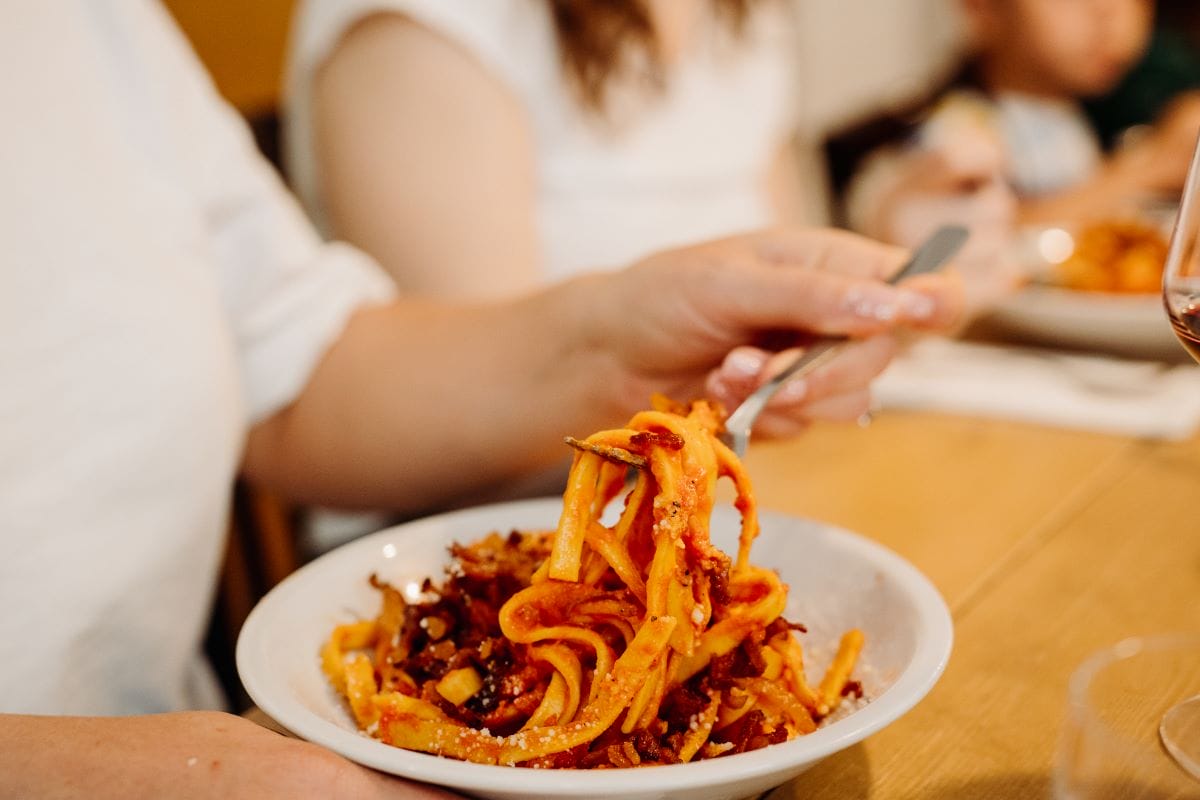
Curious about what to eat in Rome? In the Italian capital, you won’t want for delicious food.
While you’re here, though, you’ll notice that Rome has so many visitors that not all of its restaurants are truly “Roman.” Unfortunately, many eateries cater to tourists, serving up “Italian” food that isn’t fresh, seasonal, or even Roman.
So what is Roman food? Here are some of the foods of Rome and the Lazio region that you just have to order.

These are the Roman dishes you have to try while in Rome.
Table of Contents
ToggleMust-Try appitizers in Rome
Bruschetta
Perhaps it was first invented in Tuscany, perhaps in Rome. Either way, bruschetta today is a staple on the menu of most Roman restaurants. A very simple dish, it’s said that it came about when 15th-century olive oil makers would toast their bread over a fire that they used to keep warm in the winter, then would taste-test their own olive oil on it.
Today, the recipe is pretty much the same: A good bread, rubbed with only a bit of garlic (this is not garlic bread… which doesn’t exist in Italy!), and topped with olive oil. One of the most popular varieties, of course, is bruschetta al pomodoro (with tomatoes). Just make sure you pronounce it correctly: it’s “broo-SKETT-ah,” NOT “broo-shet-ah.”
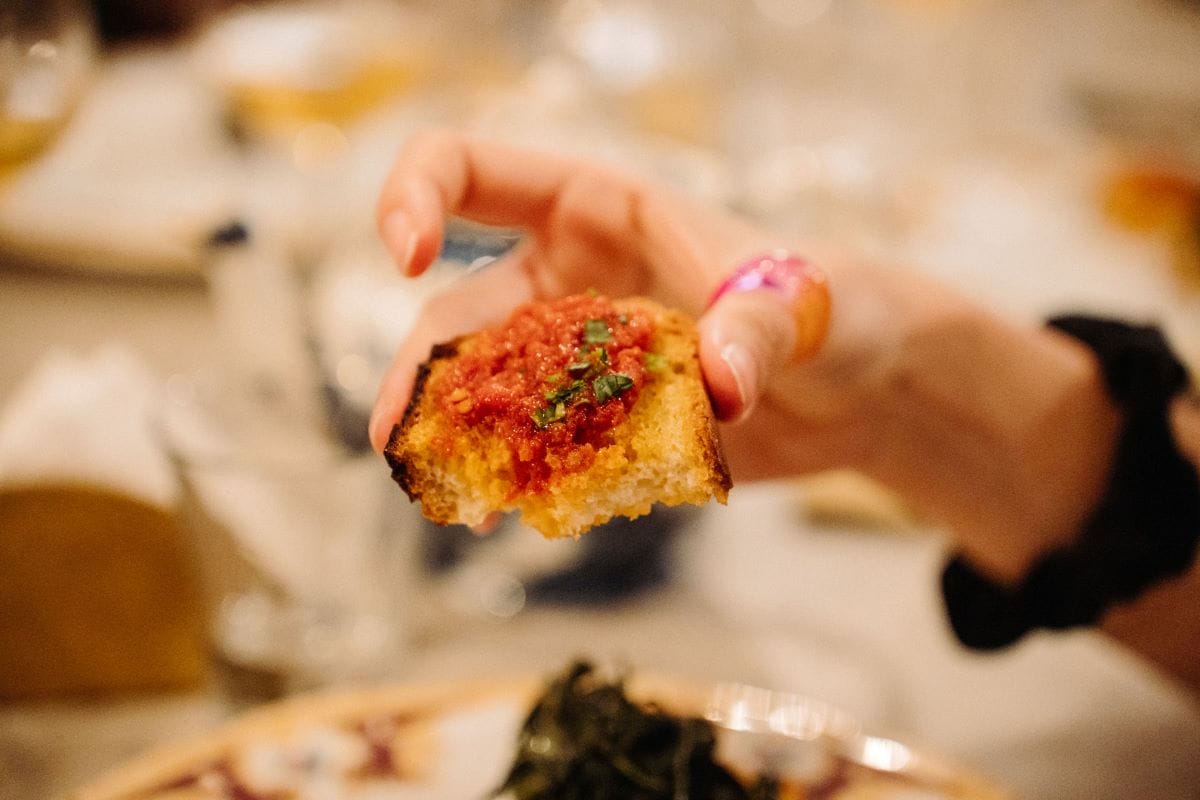
Bruschetta is perfect until the last bite.
Pecorino romano
Lazio’s answer to parmigiano-reggiano, pecorino is a cheese made from sheep’s milk (the name comes from pecora, meaning “sheep”).
Hard, salty, and delicious, D.O.P.-protected pecorino is the staple of many Roman pasta dishes, and what you’ll often be offered instead of parmigiano.
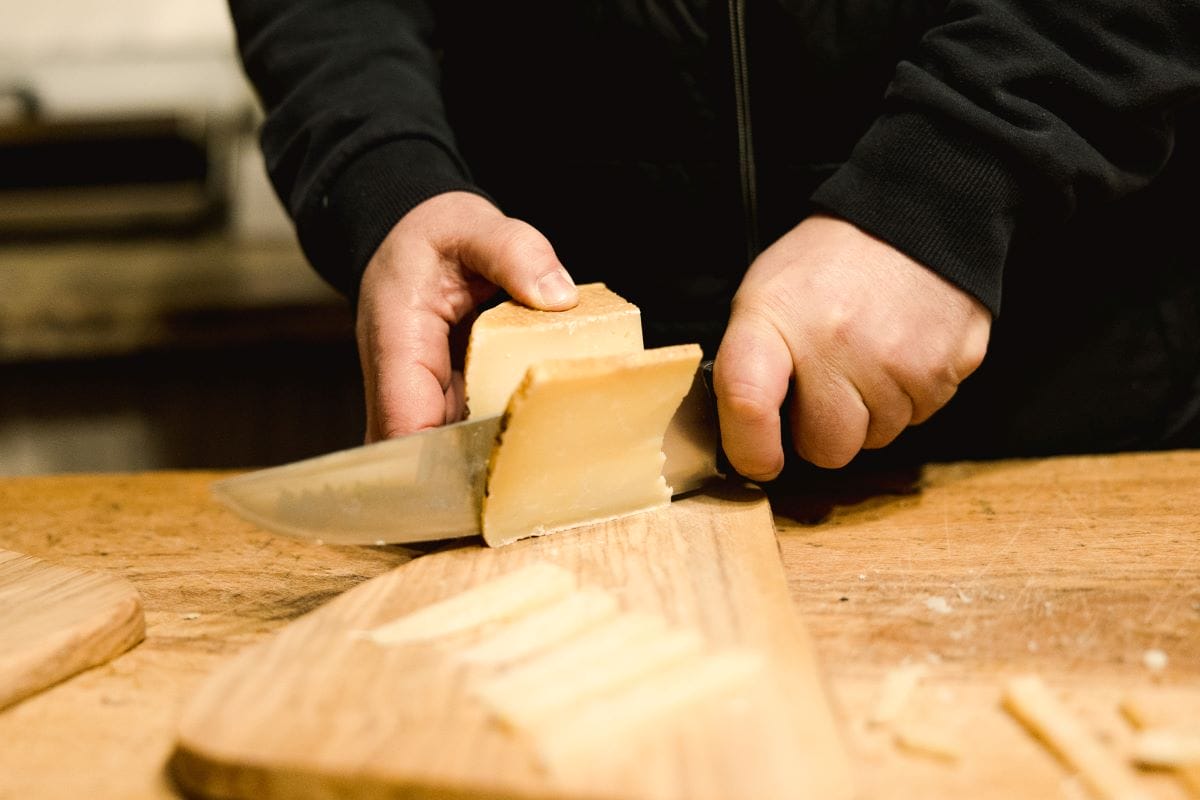
Pecorino romano is an important ingredient in Roman pasta dishes.
Porchetta
Not just a food of Umbria and Tuscany, porchetta is also served in Rome; it’s the pork carved from a stuffed, herbed young pig.
It’s served either in a panino at lunchtime or as an antipasto option at dinner.
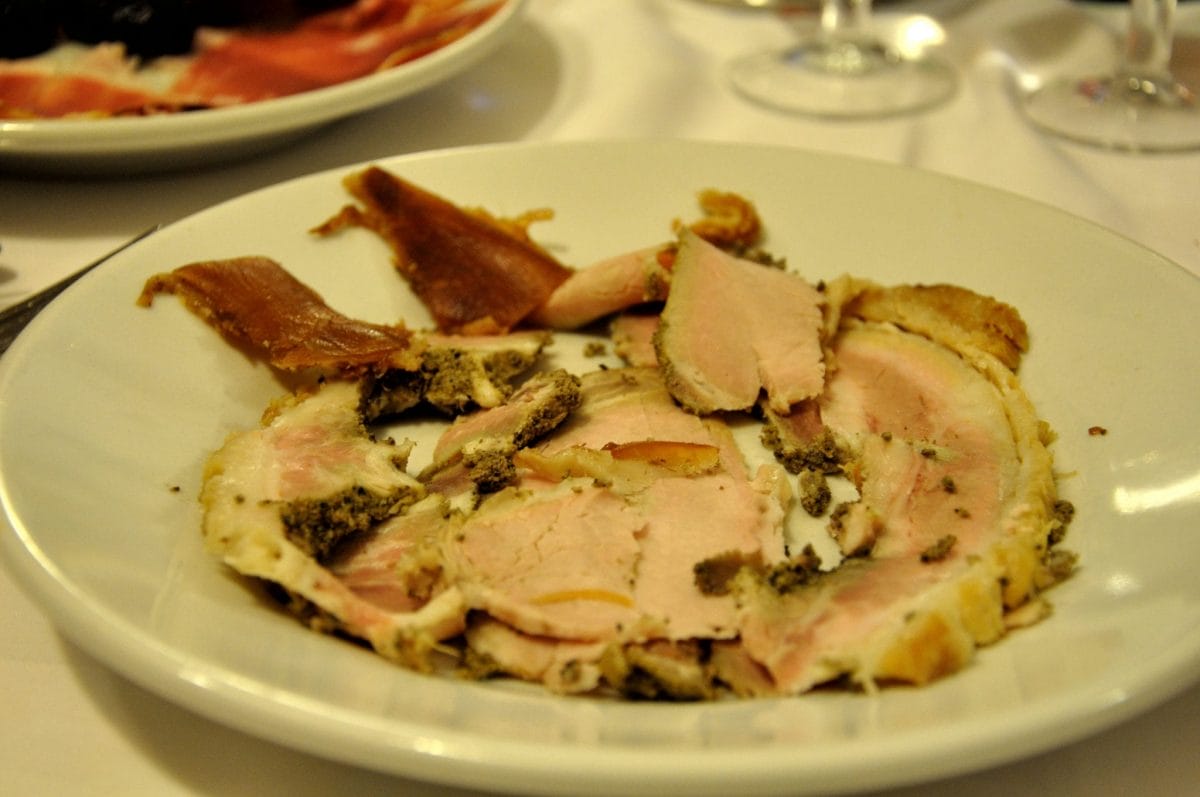
Porchetta, served as an antipasto in Rome is a must.
Carciofi alla giudia
Artichokes are popular in Italy. In Rome, there are two classic ways to cook them. This way, meaning “Jewish artichokes,” is a recipe from Rome’s ancient Jewish community; it involves frying artichokes to a delicious crisp.
Carciofi alla giudia, like many other Roman dishes, were invented by Jewish people. And if you love artichokes then there’s also…
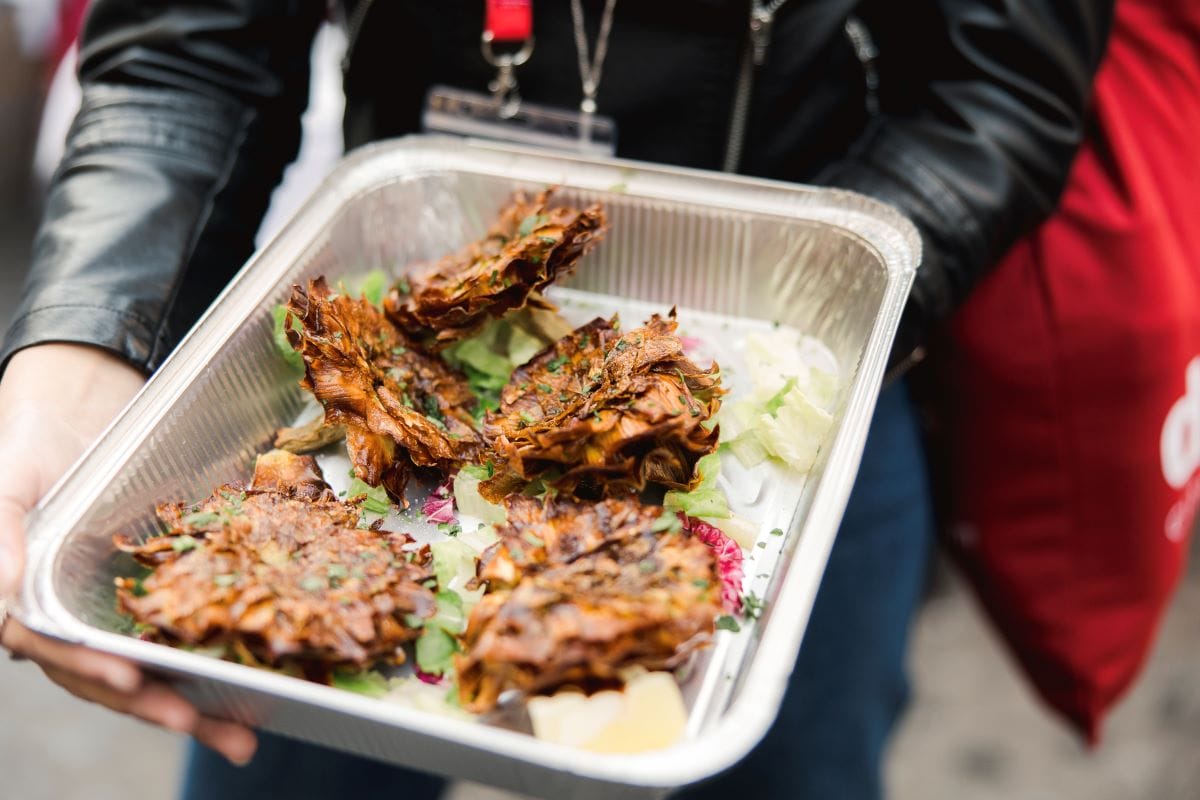
Fried artichokes? Yes, please!
Carciofi alla romana
We promise they’re not like the artichokes back home. This is a traditional Roman food you’ll want to try.
Fiori di Zucca
These are “zucchini flowers,” and they show up in Roman cuisine in all different ways; some pastas will even incorporate them.
The most popular (and traditional) way, though, is on the fritti menu as a fried antipasto or a side. That’s when they’ll be stuffed with mozzarella cheese, usually an anchovy or two, and deep-fried.
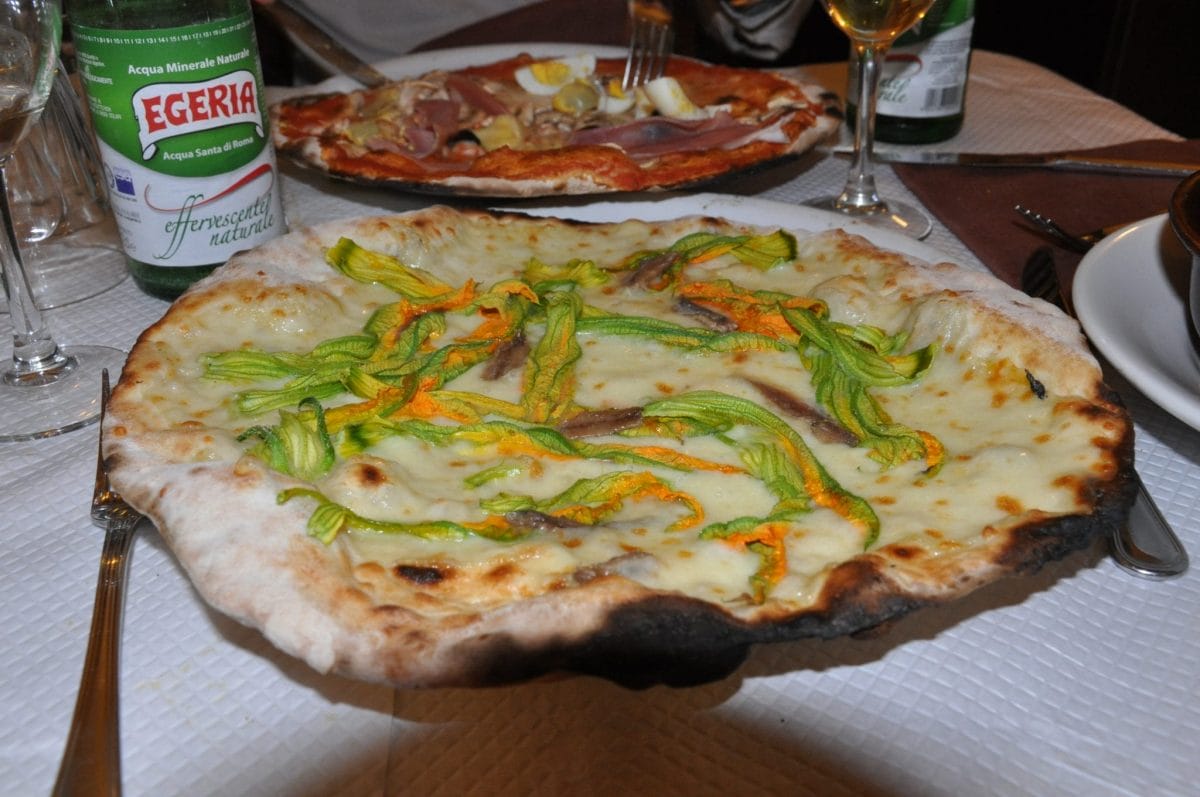
One way to try fiori di zucca? On a pizza.
Fave al guanciale
You’ll see fave, or fava (broad) beans, often on Roman menus.
Only order them when they’re in season—the spring. In this popular contorno (side dish), they’re served with guanciale, or pork jowl.
Puntarelle
Another typical Roman contorno or antipasto that should be served (and eaten) only when it’s in season: from November through February.
These crunchy green chicory shoots are served as a salad, dressed with olive oil, vinegar, anchovies and garlic.
Main dishes in Rome
Baccalà
A codfish, you see this prepared many ways in Rome.
If you see it on the fritti menu, then the fish is served up fried—as a popular antipasto or a contorno with some pizza.
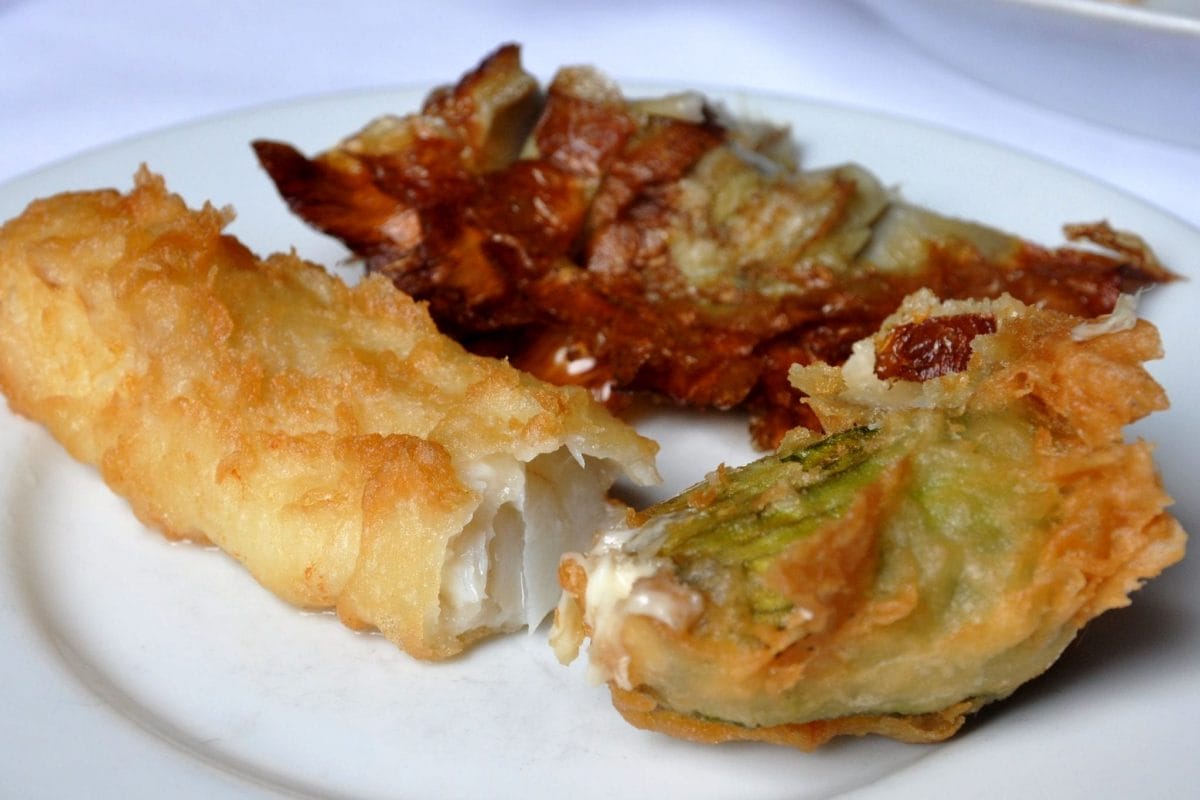
Some of Rome’s best fritti, including baccala (left) and fiori di zucca (right).
Pizza
Of course, you can get pizza Italy-wide—but Roman pizza is among the best and a typical Roman dish you have to try.
Don’t expect thick, fluffy pizza here; instead, Roman pizza is paper thin, crisp, and always baked in a wood oven.
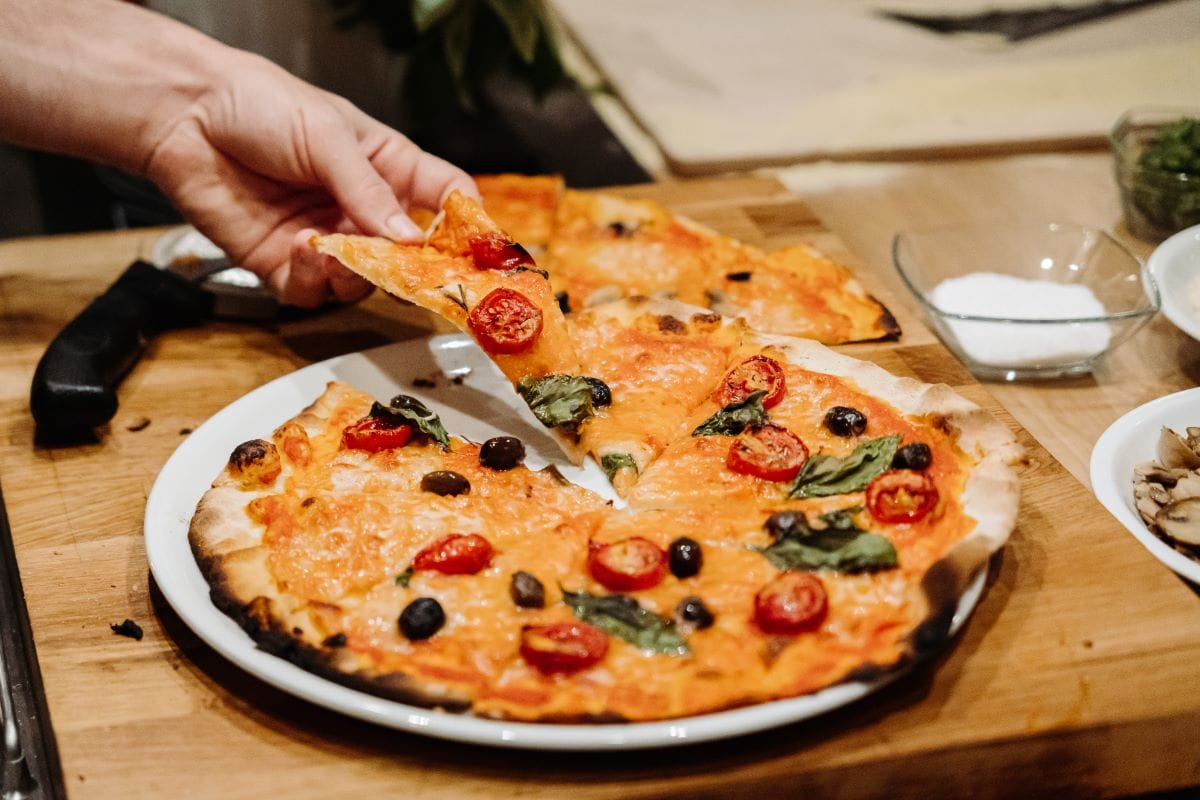
Every pizza in Rome is a personal pizza.
Roman pasta dishes
Gnocchi alla romana
Usually served on Thursdays, these soft, tasty dumplings are made of semolina and served in sauce.
Bucatini
Meaning “little holes,” this is a long pasta, slightly thicker than spaghetti. And yes, it’s got a (tiny) hole in the center. You can find dozens of varieties of pasta around Italy, but bucatini is most closely associated with Rome.
Most trattorie worth their salt will make this themselves, in-house (“fatto a casa”), but always ask to be sure. There’s nothing like fresh pasta. You often see this served amatriciana or alla gricia.
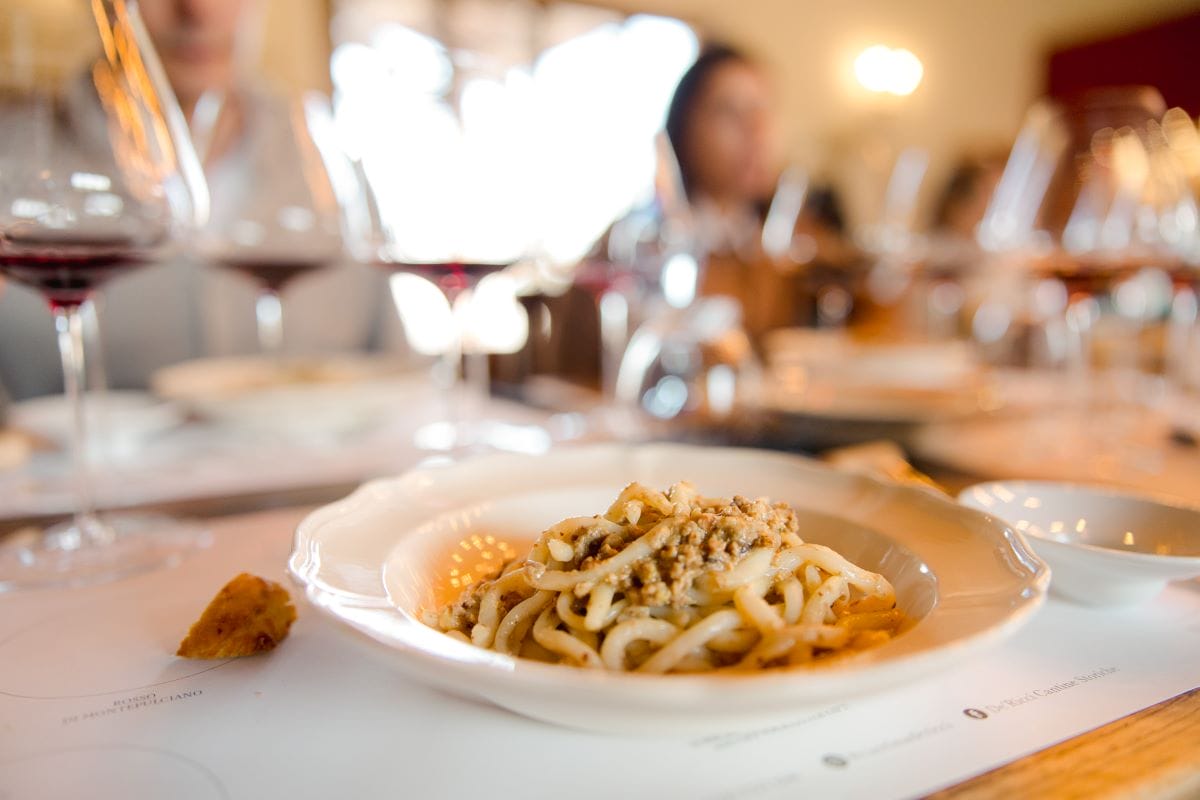
Bucatini pasta is used for a variety of dishes.
Tonnarelli
A thicker version of spaghetti, and another popular Roman pasta.
Pasta e ceci
Pasta with chickpeas. A very old, simple, and delicious recipe. Not only that, but it’s also nutritious. Legumes are often known as the meat of the poor, and this pasta was no different.
Served by nonne, or grandmothers, throughout Italy to give a healthy dose of both carbohydrates and protein in one simple, inexpensive dish.
Pasta alla gricia
A very simple, and old, Roman pasta: It’s simply pasta (hopefully handmade) with pecorino, black pepper, and guanciale (not really “bacon” and not pancetta, but pork jowl).
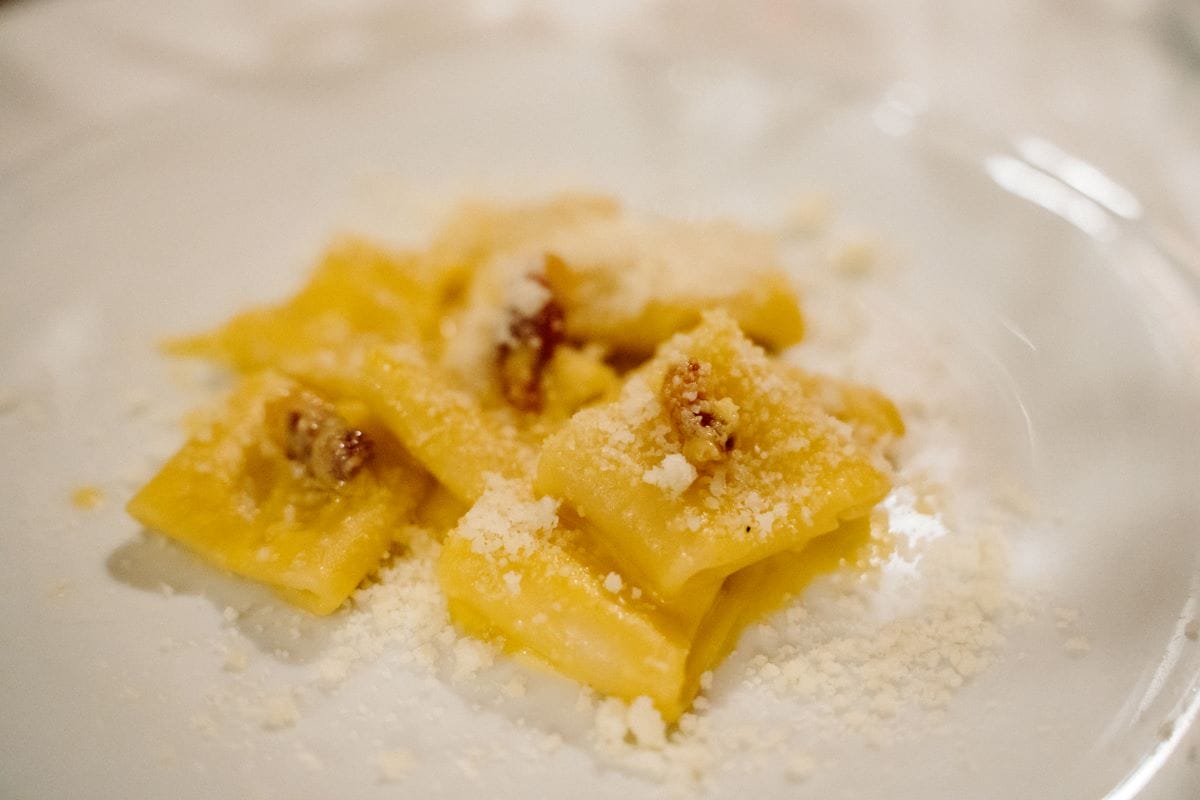
A simple and classic pasta dish that boats a lot of flavor.
Pasta arrabbiata
Literally “angry” pasta, this is one for the spice-lovers.
It’s a pasta with a sauce of tomatoes, chopped garlic and a lot of peperoncino (red chili peppers)… hence the “angry”.
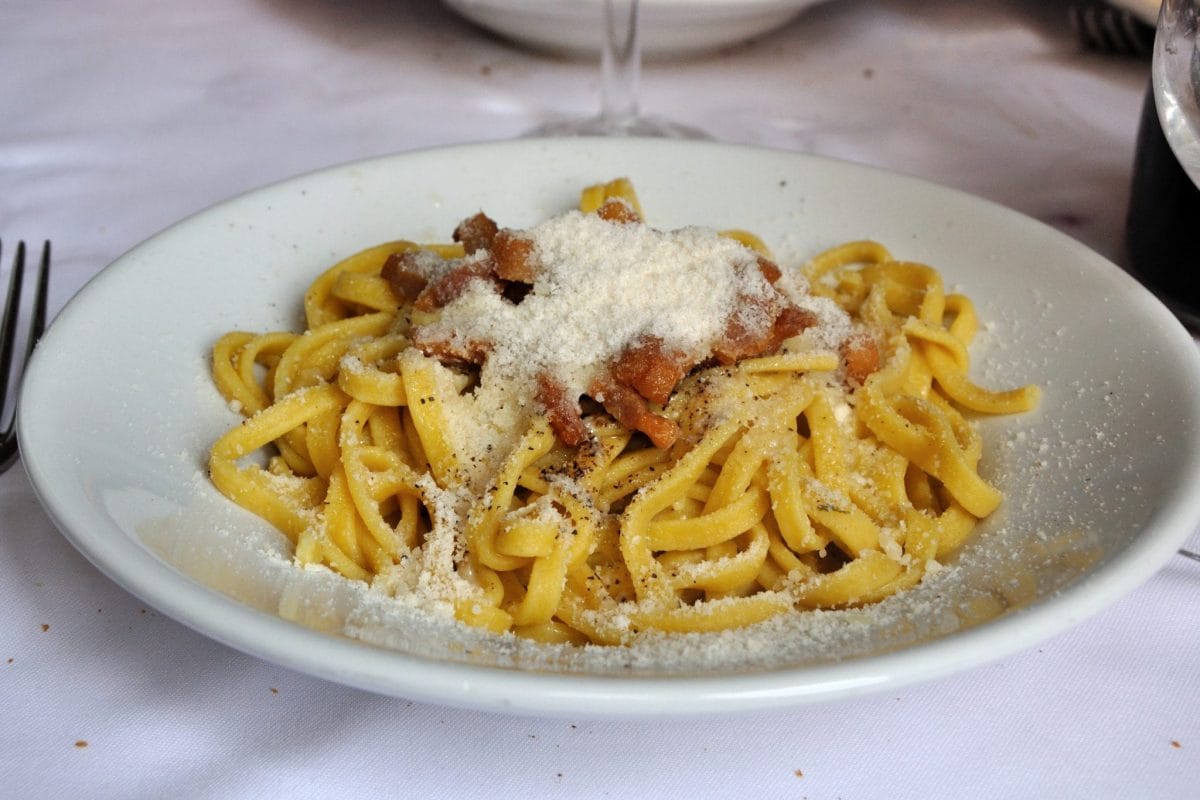
Pasta alla gricia—delicious!
Cacio e pepe
It’s simple, but surprisingly delicious. Think of it as a spicy macaroni and cheese.
Pasta all’amatriciana
The third classic Roman pasta (of three), this is pasta in a sauce of guanciale, tomato, a little red pepper, a bit of wine, and pecorino.
It’s named after Amatrice, the Lazio town that’s said to have come up with the dish. And while the sauce might have a bit of garlic, most frown on there being any onions.
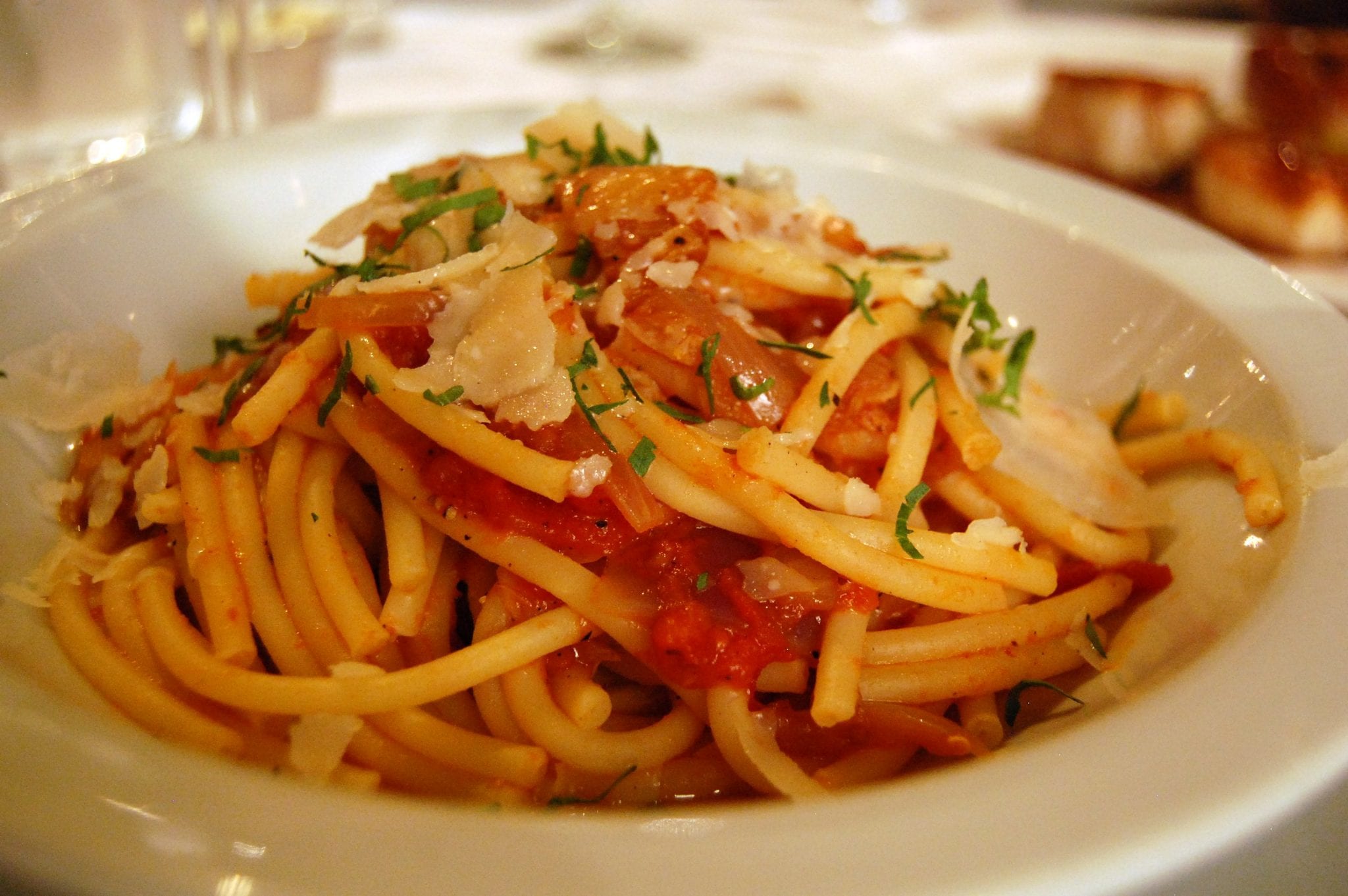
Bucatini al’ Amatriciana – does it have guanciale or salt beef? Hard to tell without taking a bite.
Pasta alla carbonara
The second of Rome’s most popular pastas, this is not as it’s made back home: Although the sauce is creamy, there’s no cream in it at all. Instead, the proper Roman carbonara is made of diced guanciale, eggs, and either parmesan or pecorino… and that’s it.
(Check out our fun video below to find out more about how the Romans make carbonara).
Rigatoni con pajata
A pasta with pajata. What’s pajata, you say? Well, it’s the intestine of an unweaned (read: milk-fed) lamb or calf. Those intestines are cleaned and skinned, of course, but that partially-digested milk, called “chyme,” is left inside.
When it’s cooked, it becomes thick and creamy. It’s usually served in small tubes with a red sauce in pasta. And while all of that might sound disgusting, believe us – it’s delicious.
This, by the way, is one of Rome’s many cucina povera dishes, food created from offal by people who couldn’t afford anything else.
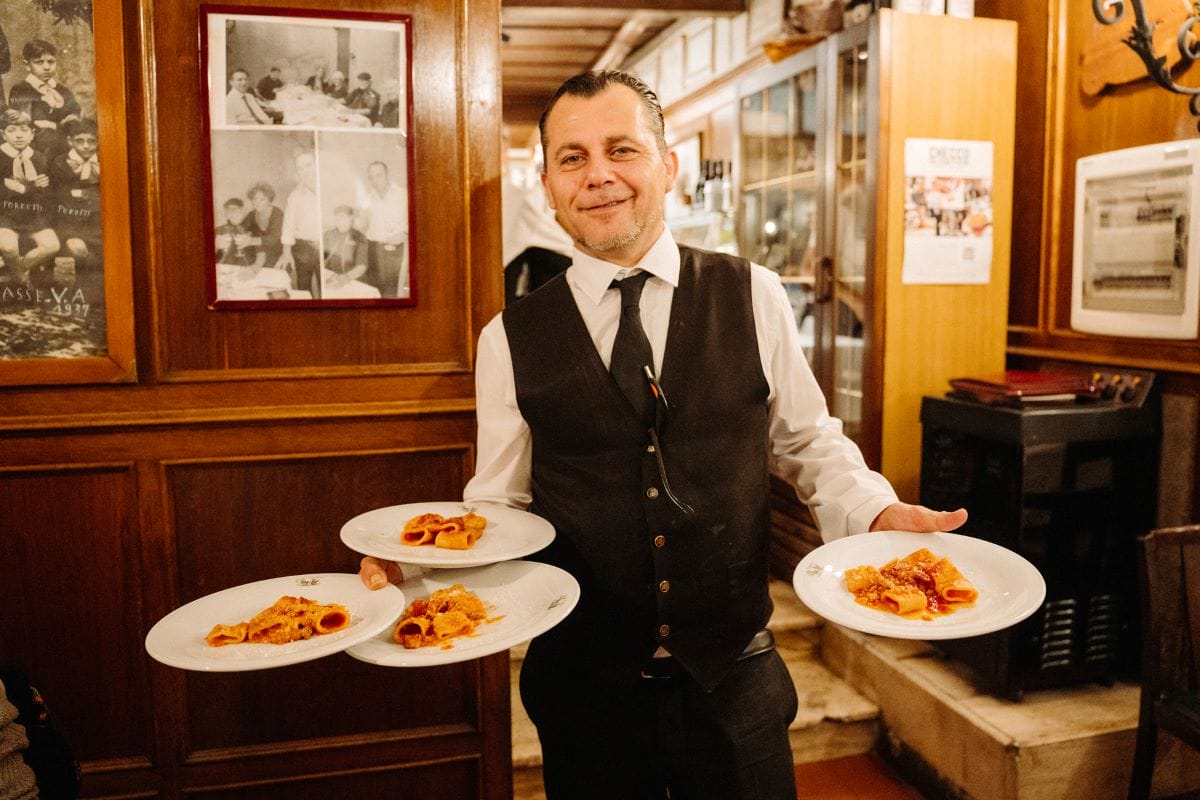
You can’t go wrong with traditional Roman food.
Top Roman meat dishes to try
Saltimbocca alla romana
Veal wrapped in prosciutto crudo and sage, then rapidly fried.
So tender and flavorful, the name literally means “jump-in-mouth” in the Roman dialect.
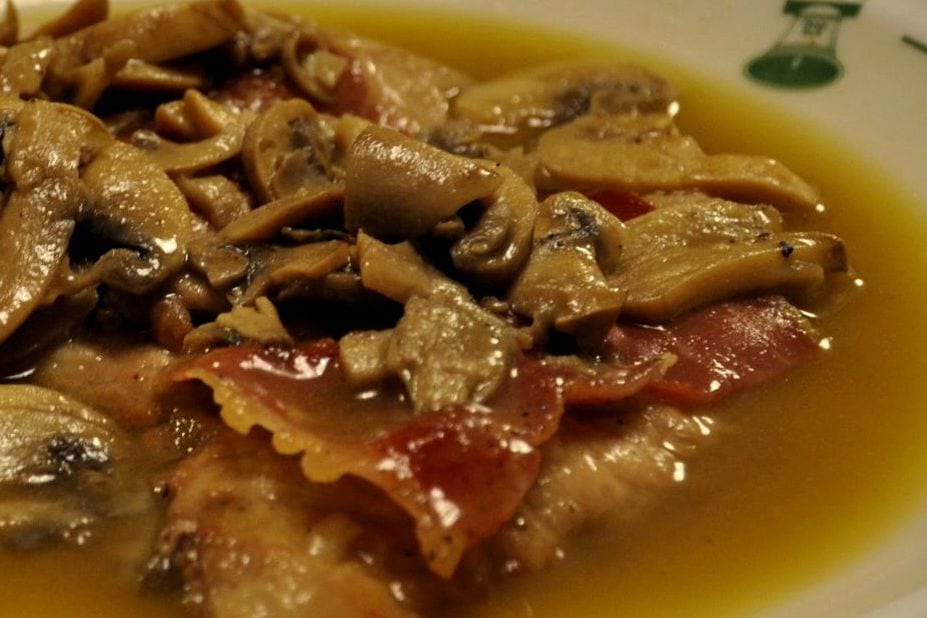
Saltimbocca… doesn’t it look like it wants to “jump in your mouth”?
Coda alla vaccinara
Oxtail, another member of the cucina povera clan, slow-cooked until it falls off the bone and usually served in a hearty tomato stew.
Involtini alla romana
Another typical Roman dish you don’t want to miss is rolls of beef which are stuffed with carrots and celery and served in a tomato sauce.
Trippa
Tripe: Yes, that’s stomach lining, often served simmered and finished with a tomato sauce. The texture is a bit like pasta, and if nobody tells you what you’re eating, you might not even know.
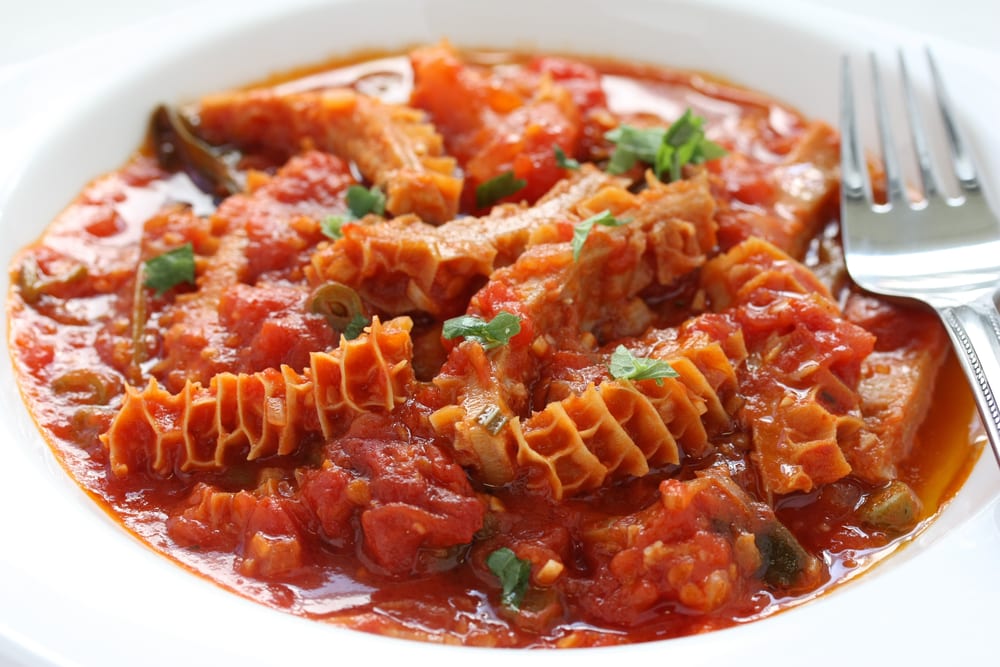
Trippa—also known as tripe. A Roman specialty.
What to eat in Rome for desserts
Crostata di ricotta
A classic Roman dessert, this is a cheesecake made with ricotta.
It’s just sweet enough, and often finished with chocolate or a fruit of the season; we particularly love it when fresh cherries are available.

Join us for our cooking class where you’ll learn to make traditional Roman food like a pro.
Update Notice: This post was updated on November 18, 2024.
Want to learn to cook like a real Roman? Join our Rome Pasta-Making Class to learn how to make homemade fettuccine, ravioli, and pasta sauces from scratch with an expert Italian chef!
by Walks of Italy
View more by Walks ›Book a Tour

Pristine Sistine - The Chapel at its Best
€89
1794 reviews

Premium Colosseum Tour with Roman Forum Palatine Hill
€56
850 reviews

Pasta-Making Class: Cook, Dine Drink Wine with a Local Chef
€64
121 reviews

Crypts, Bones Catacombs: Underground Tour of Rome
€69
401 reviews

VIP Doge's Palace Secret Passages Tour
€79
18 reviews

Legendary Venice: St. Mark's Basilica, Terrace Doge's Palace
€69
286 reviews









